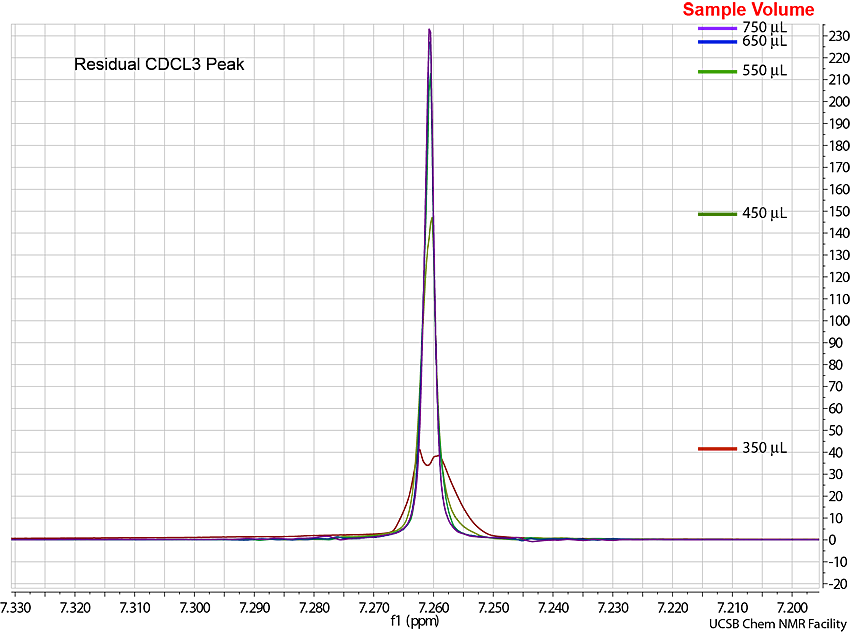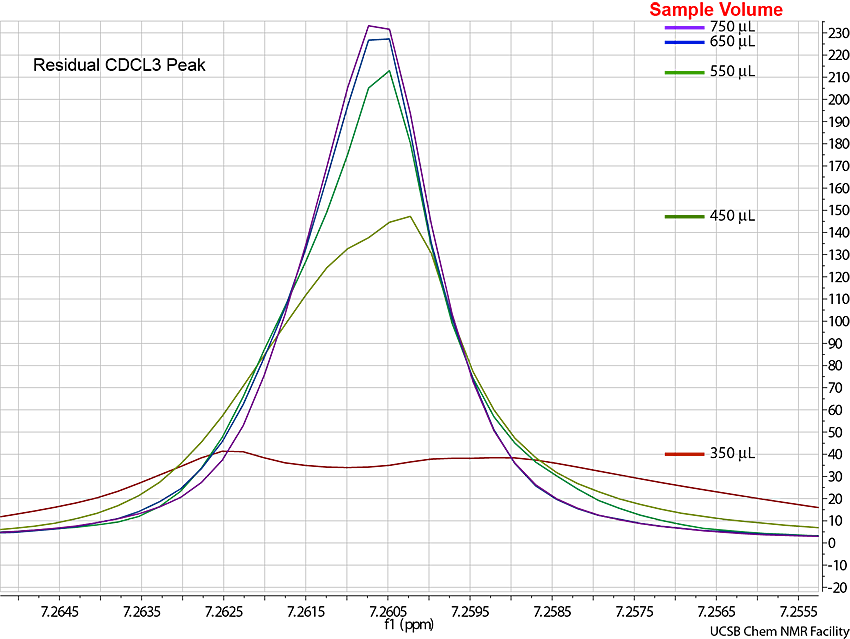Effect of Sample Volume on Signal-to-Noise and Lineshape
Data collected on NMR600

Expansion of the peak region

Sample volume is a very important common factor in small molecule NMR that has a severe impact on NMR signal-to-noise and lineshape. This fact has been emphasized during training and in a number of other documents. However, some users continue to use a small volume of sample in a regular NMR tube, hoping to gain more signal-to-noise by packing more material in a small volume.
The following figures are from a test of the volume dependence of signal strength and lineshape of the residual CDCL3 1H signal conducted on NMR600 with the cryoprobe. Each sample tube was centered carefully around the RF active region (dotted line area in depth gauge). Each spectrum was done with one single scan, same gain and other parameter setting. Shimming was done with gradient auto-shimming in all cases using Z1 to Z5. In a typical manual shimming situation where only Z1 and Z2 are quickly adjusted, the volume impact is expected to be much worse than the test case described here.
With 350-400uL of sample volume, the RF active region is covered fully with about 0.5cm above and below the top and bottom dotted lines of the RF active region. The loss of signal-to-noise as the sample volume decreases is dramatic below 600uL with simultaneous broadening and worsening of the lineshape. With 350uL of sample, signal-to-noise is only 1/6 of that from a sample with more than 600uL of volume. This means, in this setting if the same mass of material of a 700uL sample is used in a 350uL sample, there will be a net factor of 3 loss in signal-to-noise, in addition to the worsening of the lineshape. This effect applies to all nuclei, but with more impact on sharper lines including most C13 peaks. Line-broadening effect from shorter samples should also lead to weaker lock signal due to siganl-to-noise drop of the 2H signal.
Because the concentration of the residual CDCL3 protons stays absolutely constant in all test samples, it clearly indicates that the loss of sensitivity and good lineshape is entirely due to poor field homogeneity achievable with a shorter sample.
Please keep sample volume as close as possible to 700uL in a regular 5mm NMR tube. This is particularly important for manual shimming where volume-dependent higher order shims are harder to adjust. All standard shims loaded with init1h are calibrated with 700uL of sample.
In some cases, if a small volume has to be used to achieve the best sensitivity, a Shigemi tube should be used. This type of tube has a flat bottom and a glass plug. Minimum volume for this tube is ~280uL. Lineshape comes close to that from a longer tube.
Effect of Sample Volume on Signal-to-Noise and LineshapeData collected on NMR600
|
Expansion of the peak region
|
H. Zhou updated Oct 2011